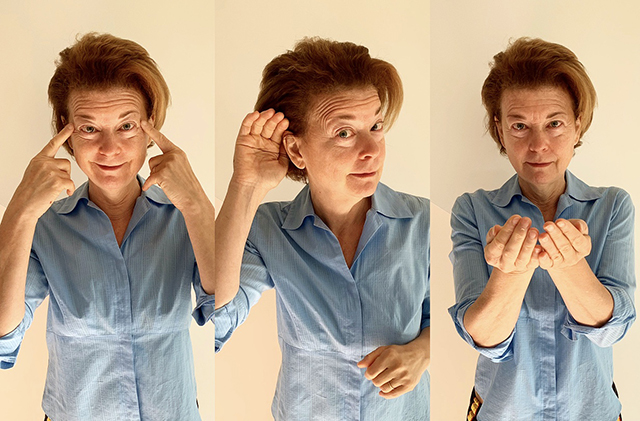
This past week I had a terrific time working with a management team. Among the many topics we discussed was each person’s primary intake pathway and how it impacted their team’s communication.
What’s a primary intake pathway?
As you know, there are many different ways we take in information. We see, smell, taste, touch, and hear.
Individually, however, we each have a primary intake pathway: those who are more visual learn best through their eyes; those who are more auditory learn best through their ears; those who are more kinesthetic learn best through their bodies.
How can this help you (not to mention your team)? Well, as an aural, I know that I learn best by listening—taking notes while someone is talking is distracting to me.
Given that, before I learned about intake pathways, it used to make me crazy when clients would take notes while I was talking. How could they take notes AND listen? They obviously weren’t listening, so I’d make them put down their pens and look at me—which, FYI, makes kinesthetics stop listening.
Yes, kinesthetic types ‘listen’ through their bodies—by writing down what you say. And no, it doesn’t matter if neither you nor they can read their notes afterward.
Visual types, on the other hand, don’t seem like they are listening at all. They’re the ones who are constantly interrupting, changing the subject, veering off on tangents. Why? Because our eyes take in thousands of impressions in seconds, so their words fly out—feeling like thousands in seconds.
How can you diagnose yourself?
It’s often pretty straightforward. If you’re hovering between two choices, however, consider what you do for a living. Most of you will have made choices based on your intake pathway. For example, as an aural, I’m a word person. Talking and writing is my idea of fun—except for a few words that upset me beyond all reason (a topic for another time….)
My friend, Jill, is kinesthetic. She makes her living as an architect—which is all about spatial relations. I can’t even pick out the right sized pan to pour a box of soup into. (Yes, it’s true, I can’t cook. Cooks are kinesthetic, as are race car drivers and hairdressers…and yes, it’s probably best if I never make you dinner, drive you anywhere or cut your hair.)
My friends who are art dealers are visuals. They live through their eyes. Not me. Whenever we are together—whether it’s at a gallery opening or a shoe sale—I’m constantly asking them, “OK, am I having a taste-lapse or is that beautiful?”
How can this help you? As I mentioned earlier, it can help you refrain from being impatient with the way others listen. Once I’d realized my kinesthetics needed their pens, I let them keep them. Once I realized my visuals needed to zoom off on tangents, I let them.
What are some other benefits? Well, in this day and age of electronic communication, it’s easy to be misunderstood in an email—and it’s easy to be offended by others’ emails. If this is a frequent occurrence for you, you’re likely aural too.
What can you do? I start by reminding myself that a beautifully crafted e-mail is not everyone’s strength (nor is it—shockingly enough—a sign of my superiority….) and that I need to factor that in when I receive a communication that lands for me as curt or confusing.
It also informs how I organize my emails to my visual and kinesthetic chums so that I don’t overwhelm them with detail or bury them in a plethora of pleasantries.
Speaking of overwhelming others with detail, I recognize that a blog post is a tricky way to present information that, at the end of the day, is fairly complex/confusing.
If you’re finding it so, the main thing to remember is that no way is right or wrong, better or worse than any other—and that learning to speak someone else’s ‘language’ can often be quite fun.
If you’re enjoying diagnosing yourself, check out: “The 9 Kinds of Silence: Which Do You Favor and How Do You Use Them?”
